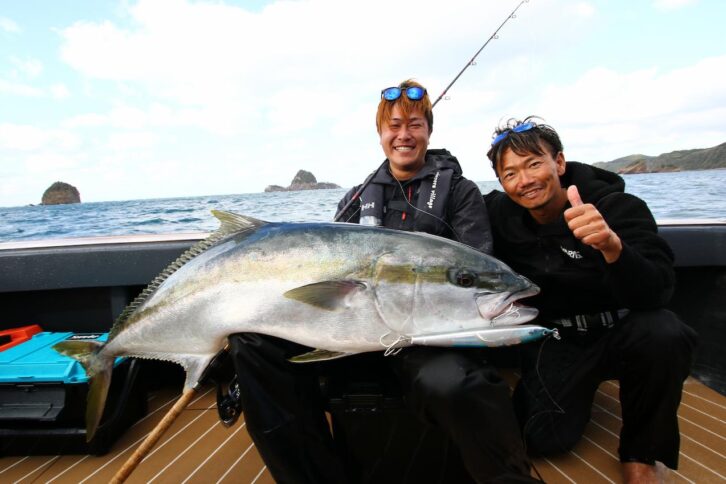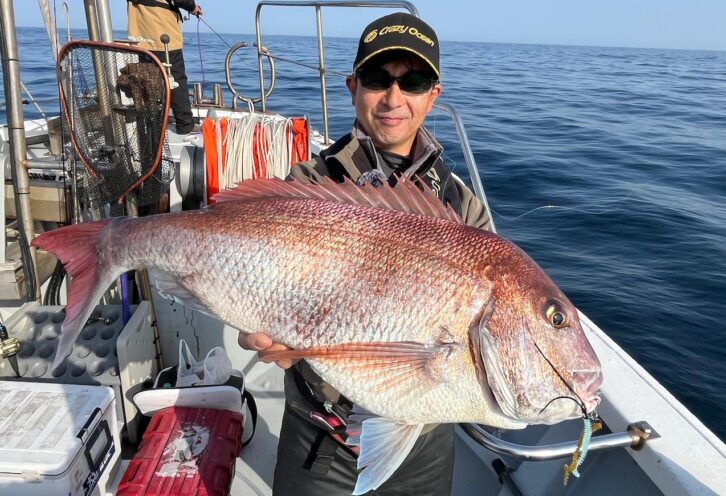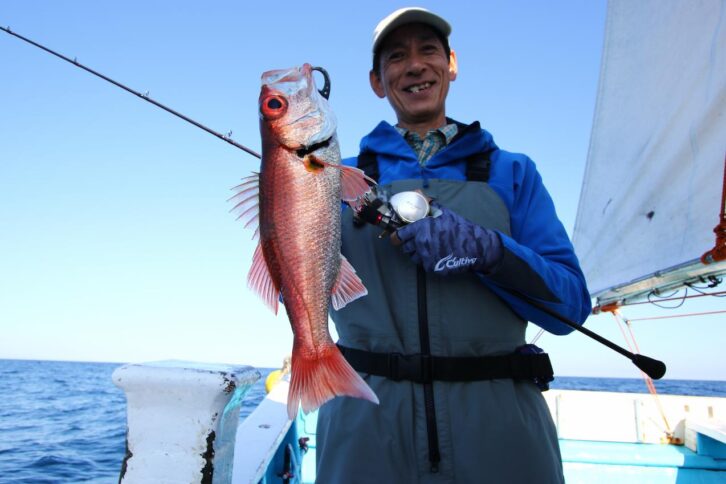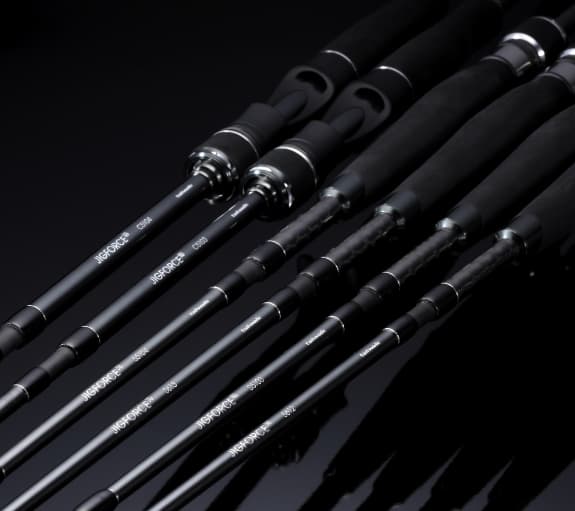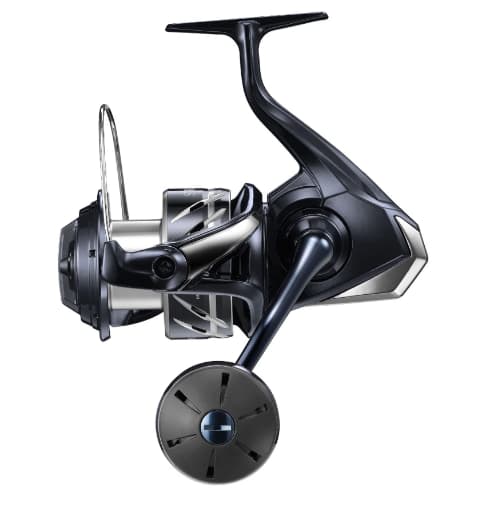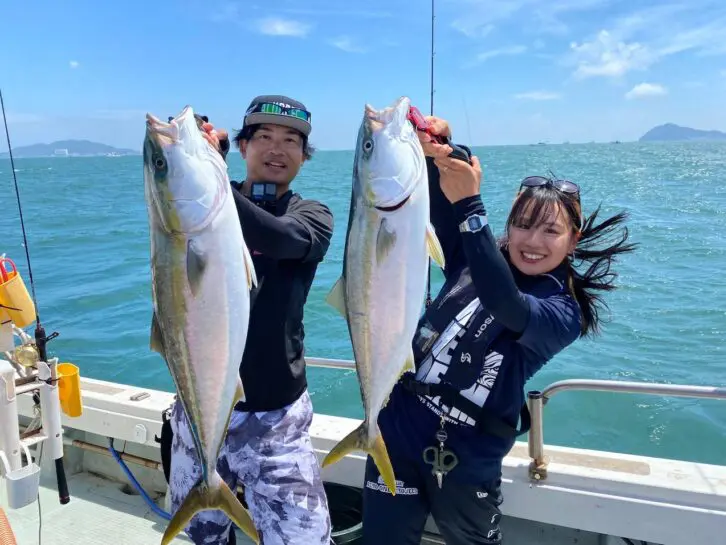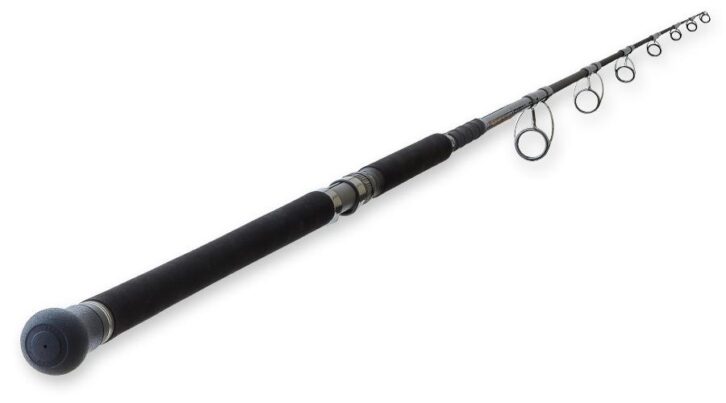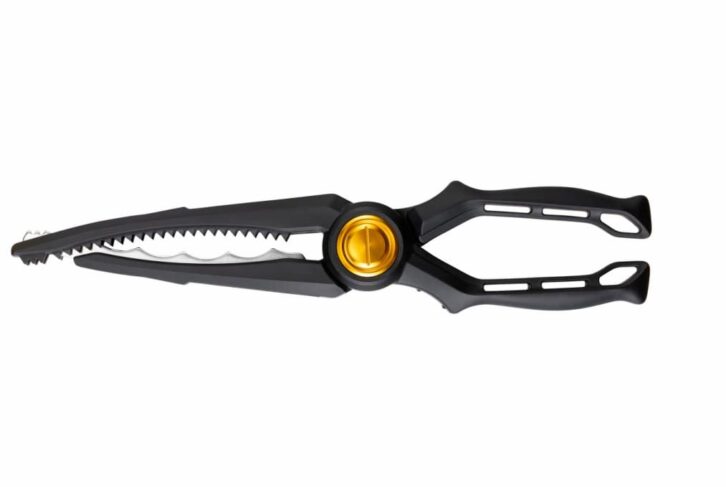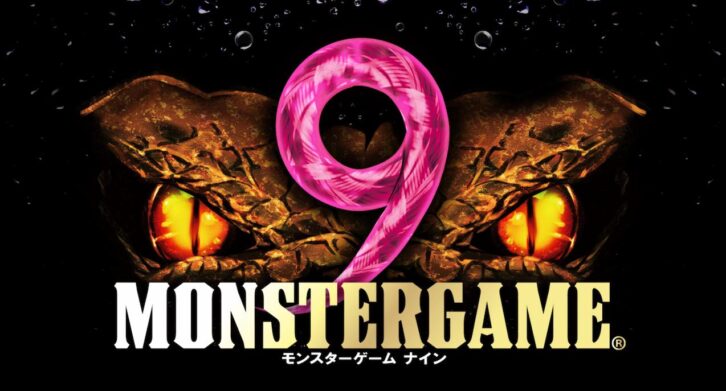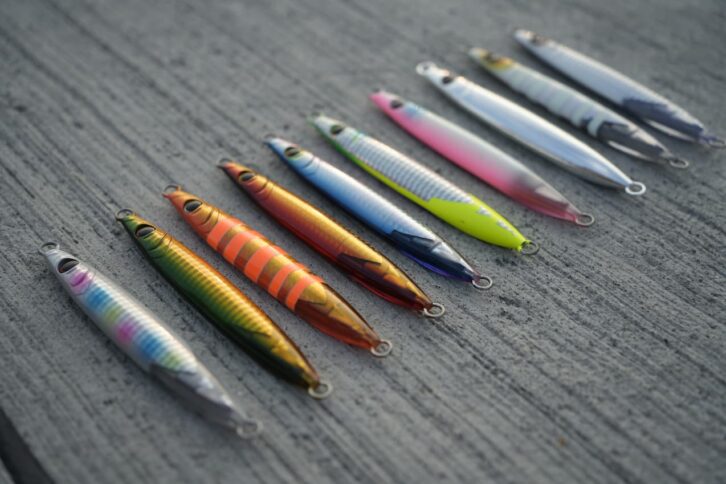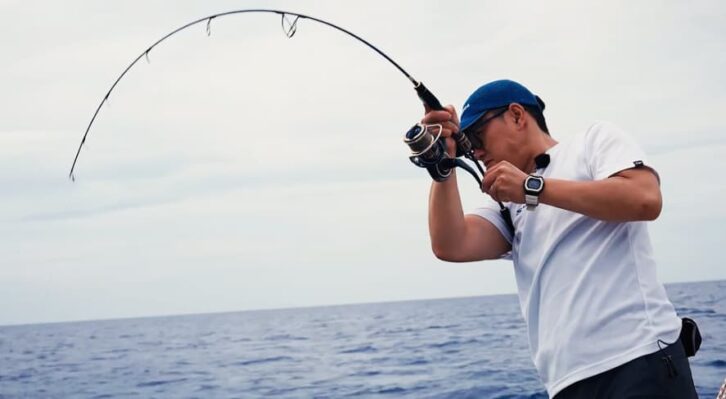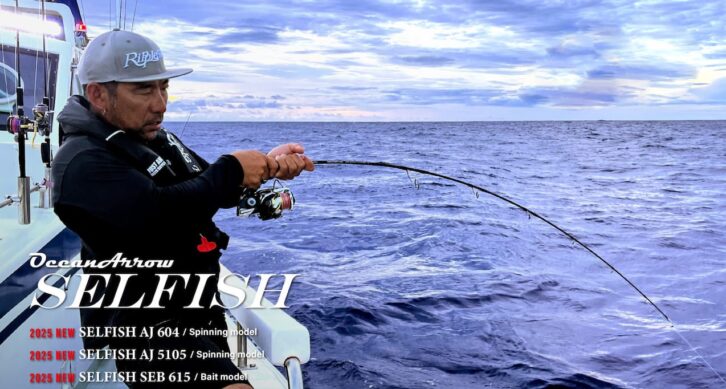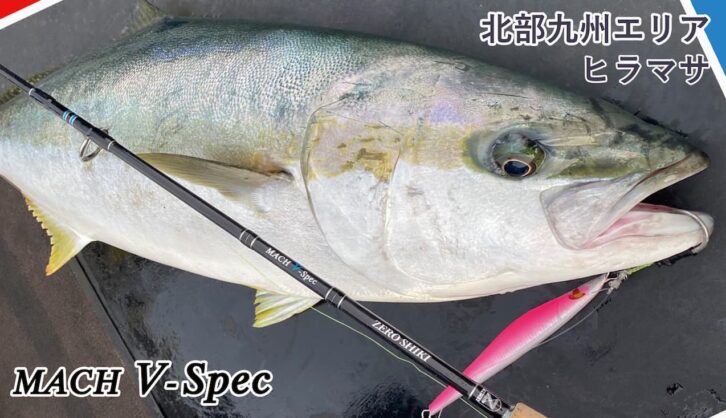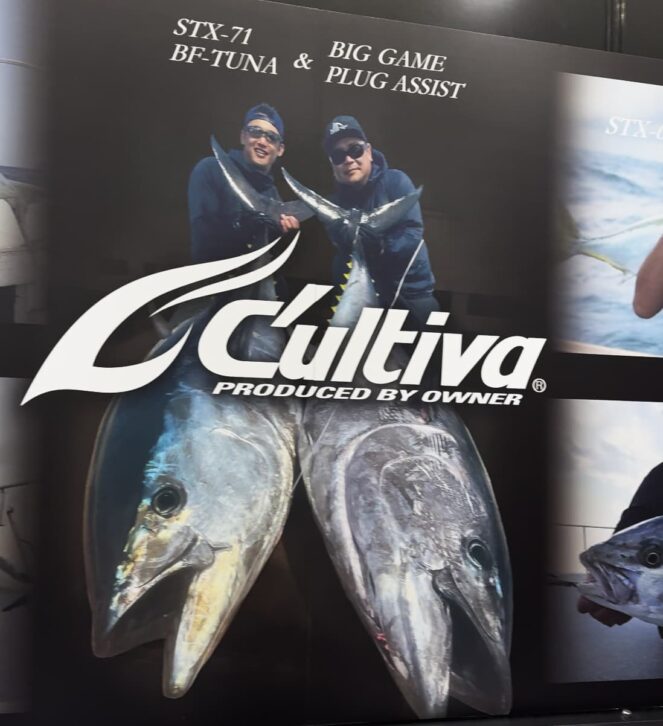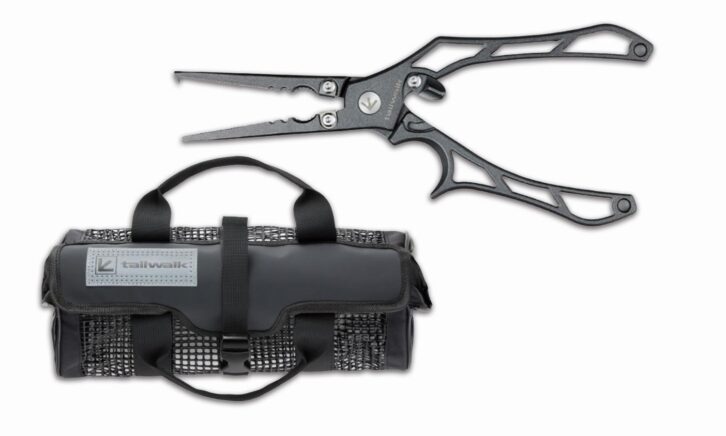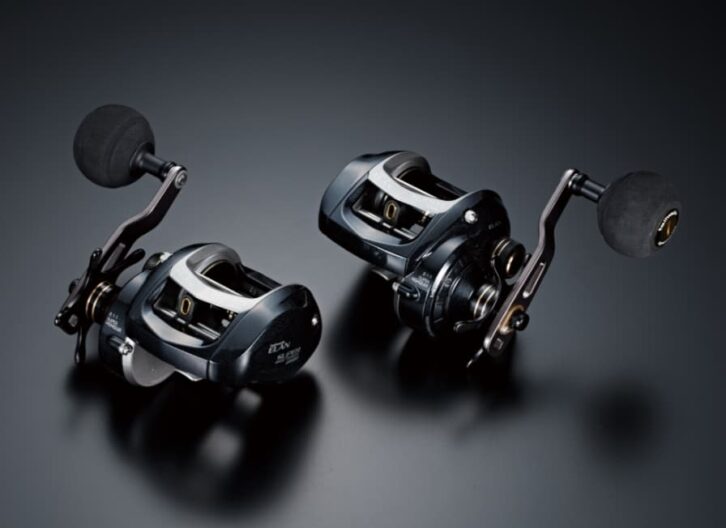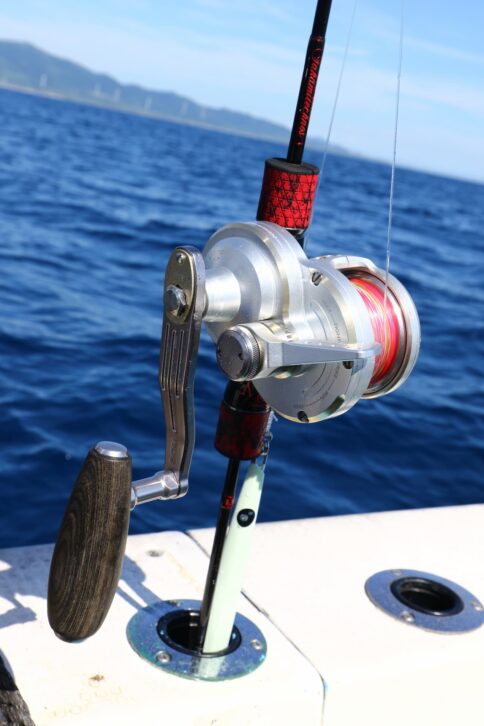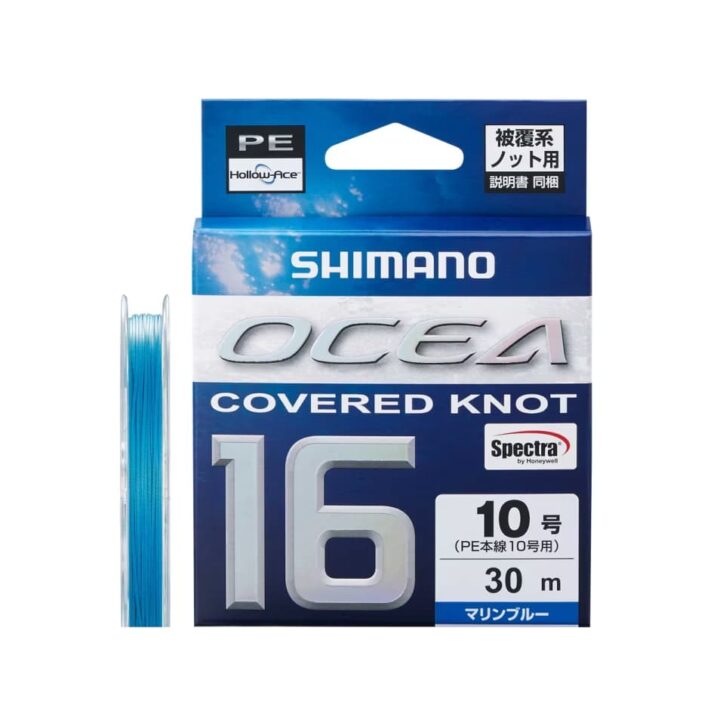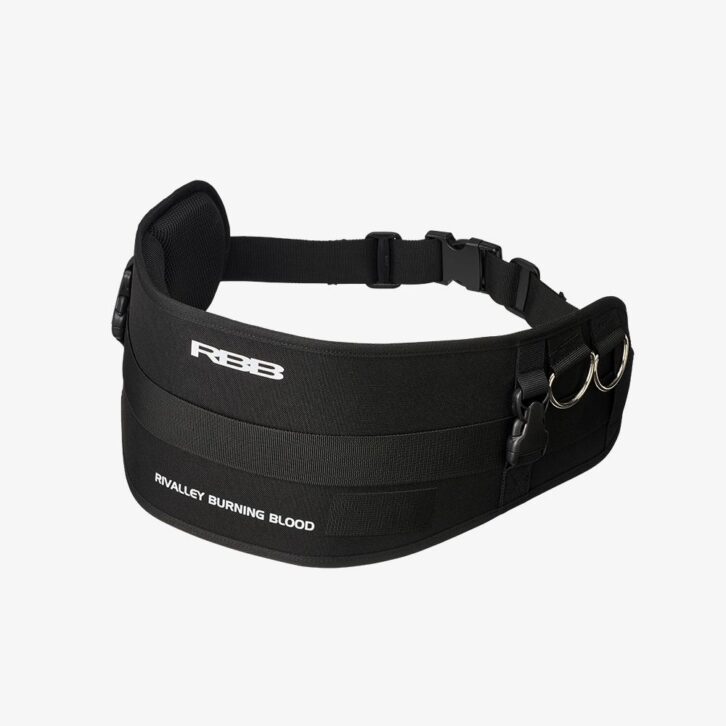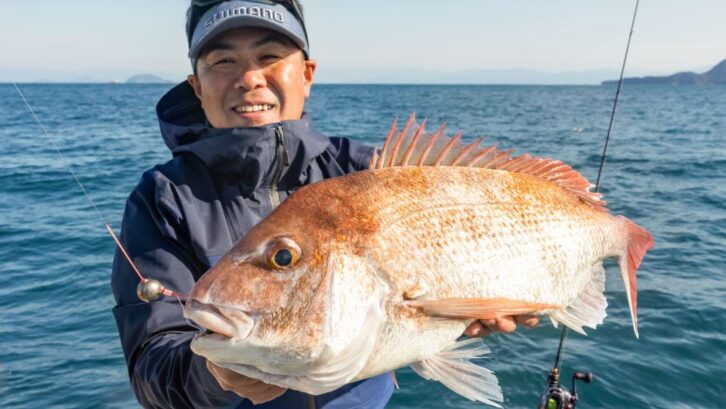The ultimate state-of-the-art casting rod!
Completed with the latest and strongest carbon material and rod manufacturing technology! Suitable for everything from large inshore fish to bluefin tuna!
APIA GRANDAGE WORLD OCEAN ~Development story and lineup~
The WORLD OCEAN offshore casting rod was created by adding APIA's original technology to T1100G, the world's strongest carbon fiber. In addition to the increased casting distance that everyone can feel, this series of rods also offers overwhelming strength, a great feel in operation, and reduced stress on the angler's body. We spoke with Yoshio Utsuki, the developer and president of APIA, about his thoughts on this rod, the details of its performance, and the story leading up to its completion.
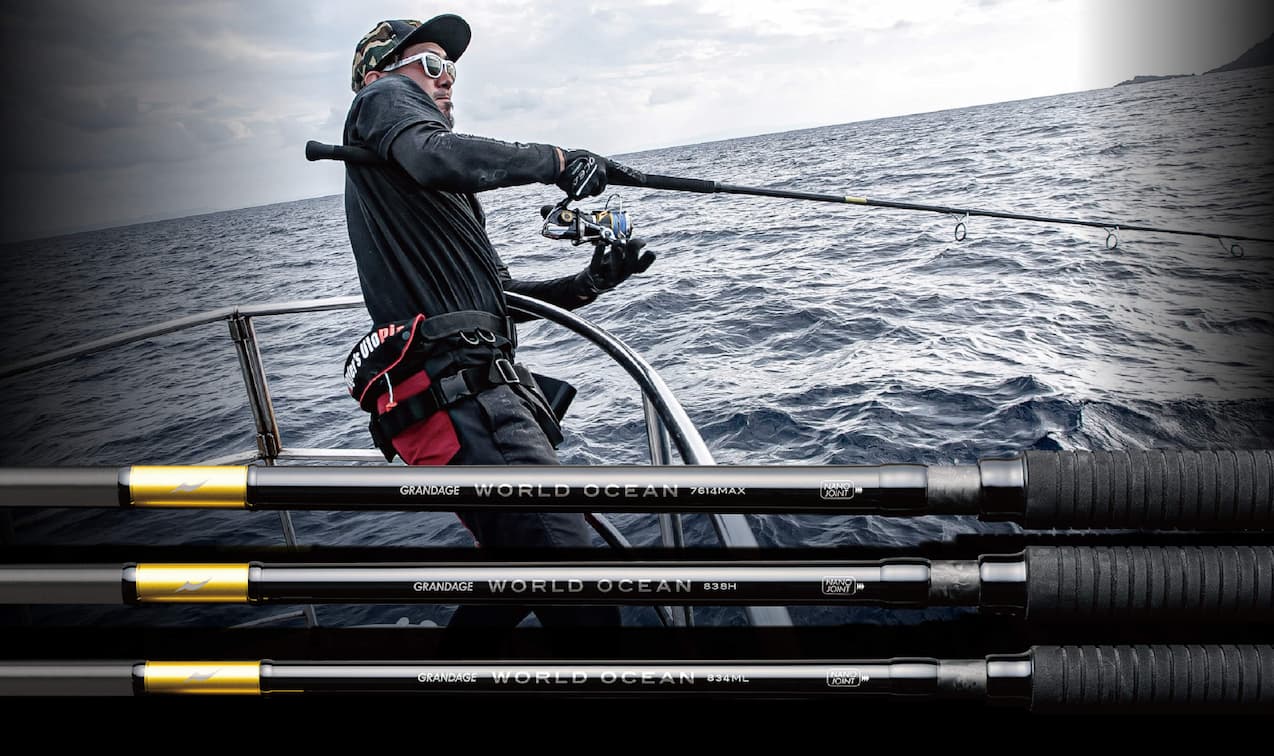

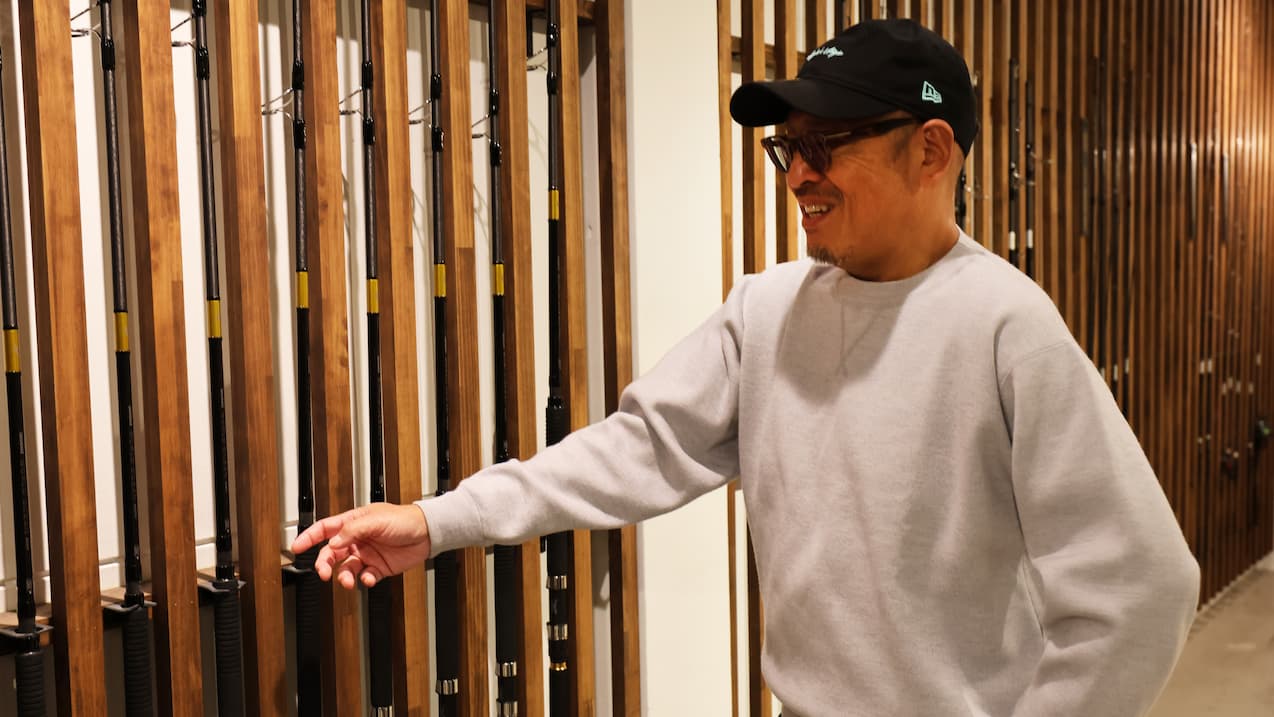
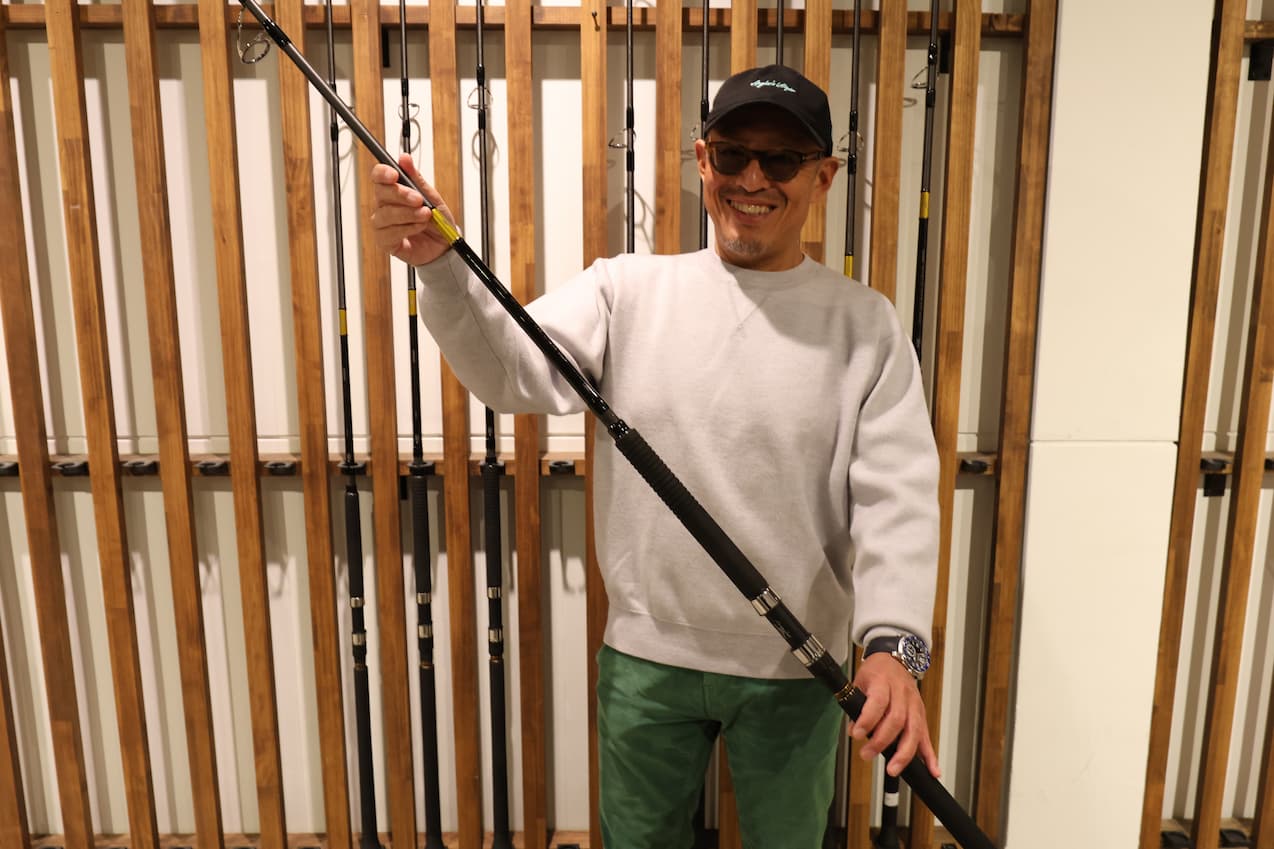
For this interview for the rod WORLD OCEAN, Mr. Utsuki, the representative of APIA, personally told us about the development process, performance, and his passion for the rod at the APIA head office exhibition hall.
INDEX
Background to the development of APIA’s first offshore rod in 20 years
APIA is a rod manufacturer that mainly develops sea bass rods, which have many passionate fans. APIA has been developing rods with the aim of creating the ultimate seabass rod, and has released a number of popular and capable rods into the world. Today, they are developing not only seabass rods but also a variety of shore game rods. However, when the company was founded, it started out in a different field.
Our company was founded in 1997, and we are now in our 27th year. Today, the company has a strong image of sea bass rods, but we actually started out with jigging rods, and for a while we were developing and selling offshore rods,” he said.
The year 1997 was the genesis of the offshore lure game in Japan. Until a few years before this year, nylon and fluorocarbon lines were the mainstream, but the advent of thin and strong PE lines changed the salt game dramatically. In jigging, anglers were able to explore deeper water, and heavier metal jigs were introduced one after another. Later, jigging rods were developed along with a variety of methods.
Before APIA was founded, I saw in a magazine that large greater amberjack could be caught by jigging on Amami Oshima Island, and I took up the challenge, which is how I got hooked on jigging myself.
At the time, there were still few types of jigging rods available, and many anglers were modifying existing rods. Utsuki learned of the existence of such modified rods and began making his own.
Not only did I modify rods, but I also started making my own bait rods for jigging,” he said. Then my expedition mates started asking me to make them, and that was the start of APIA. Until we shifted to seabass rod development 20 years ago, our main focus was on offshore items. However, my own thinking has changed a bit over the past few years. I decided to revisit the offshore fishing that I was so passionate about in the past…”
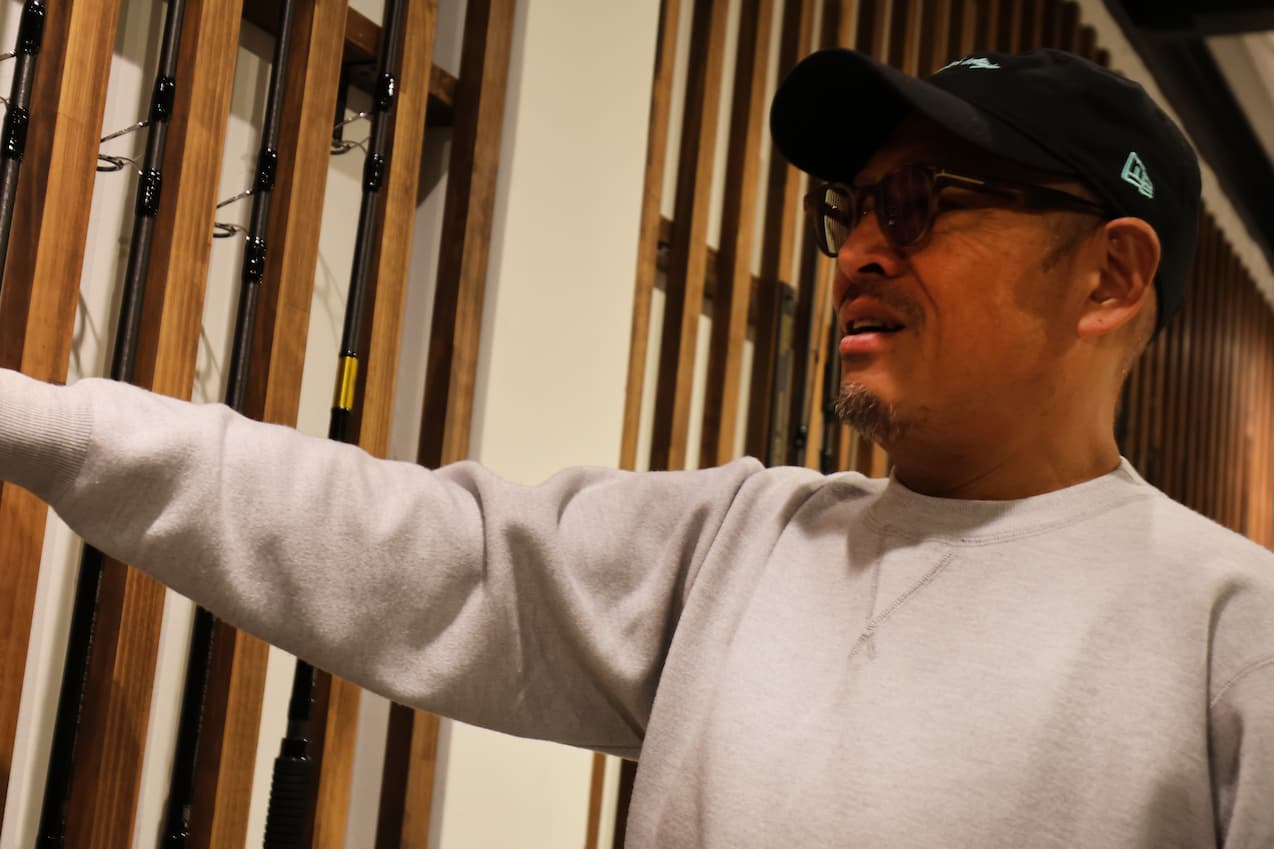
Before and for a while after APIA was founded, Utsuki was passionate about offshore fishing. As he got older, he felt that his own physical strength was declining, and this made him decide to revisit the offshore fishing that he had been passionate about in his 20s. He also started working on offshore rods using the latest materials. The first of these rods is the [WORLD OCEAN].
Casting Rods That Were Not Easy
Several years ago, when Mr. Utsuki was thinking about starting offshore fishing again, he received an invitation to go jigging for yellowfin tuna on Kume Island.
My companion there told me jokingly, ‘Since you are a rod maker, you should make your own rods,’ so I started by making a slow jigging rod, which was not available at the time, just to see how it looked.
And although he was not satisfied with the rod, he was able to catch fish with it. However, the next time he decided to go GT fishing, he realized that it would not be easy to make one. This was because GT rods were much different than they were 30 years ago, when Utsuki was into offshore fishing.
At that time, nylon was still the mainstream for GT fishing. So we didn’t know how much strength to increase or what kind of performance would be suitable for PE. However, it was precisely because of these difficulties that we became obsessed with creating castin rods designed for large fish.
This was the start of the development of the “WORLD OCEAN,” now available.
The challenge with the latest material T1100G!
About five years ago, we started developing a seabass rod using the carbon material TRECA ®️T1100G. The production of rods using this newly born carbon material was a new challenge for APIA. At the same time, we considered using this T1100G for the “WORLD OCEAN” as well. This T1100G is called the third generation carbon fiber, and is the latest carbon that has greatly improved both strength and hardness (modulus of elasticity) compared to conventional products. It is one of the strongest carbon materials in existence. This makes it possible to create blanks with high elasticity.
After that, APIA developed not only seabass rods, but also rock shore and shore GT rods, and even light rods such as for angling, by including T1100G. As he worked on those rods, he began to understand how to use the T1100G effectively.
By incorporating the T1100G into casting rods, we were able to create rods that increased casting distance beyond our expectations. the use of the T1100G increased resilience, and rods that bent when casting returned quickly, contributing to an increase in casting distance. Furthermore, the tip stops quickly after casting. The spinning rod’s structure allows the line to spiral out, but if the tip is too shaky, the line will strike the blank. This causes a decrease in casting distance. With the T 1100G, however, the line stops perfectly. The flying distance is different by one or two lengths. This distance is the best. Some offshore makers use T 1100G, but there are still few offshore casting rods that use it. That is why we focused on this material. But T1100G has a high elastic modulus of 33 tons, so we had to combine other elements to increase its strength.”
The most important thing in an offshore rod for targeting large fish is that it must not break. If it breaks, the fishing day is over. That’s why we pursued the strength aspect of the rod to the utmost.
Rods for large fish must be designed for fighting with the rod upright in the gimbal style. In this case, a rod with low elasticity that bends without rebounding and a rod that does not rise up would be hard on the angler. However, the T1100G is like hard rubber; it requires pushing force but has a strong return force. Therefore, we were able to create a rod that could apply strong pressure to the fish with its strong resilience, and also float the fish, making the fight easier. As we repeated the test, we also realized that the fight time was clearly shorter. I felt this was a big advantage.
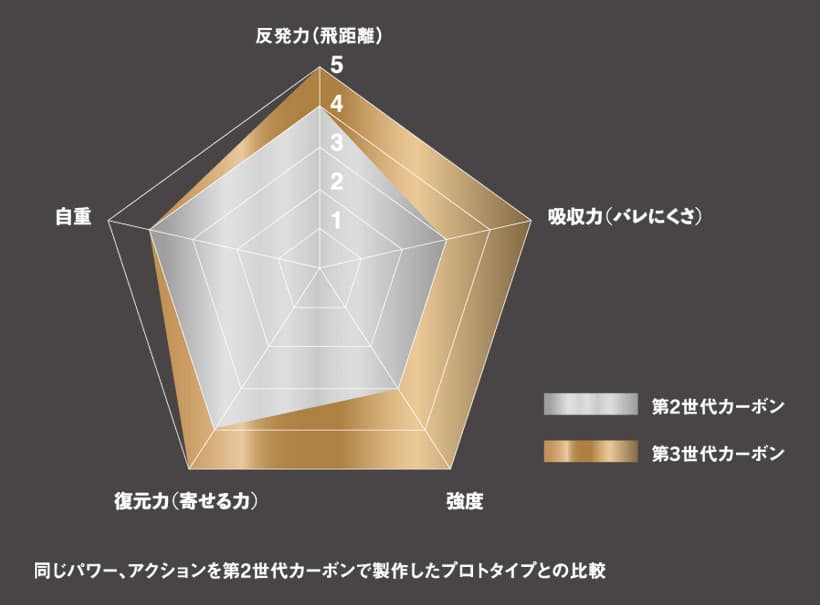
Pursuit of strength: BULK405, nano joints, and Shield Tech
While using T1100G as the main material, development was carried out for each model to determine how much strength to provide for each model.
We combined other tonnages of carbon, added a little glass in the model for tuna, and added APIA’s original new BULK405 technology to increase the strength.
BULK405 is APIA’s original reinforcement structure that combines a multi-directional prepreg in a single carbon sheet and 405 super resin treatment. The usual pattern is to reinforce the longitudinal fiber blanks by layering carbon sheets in multiple directions afterwards, but by placing them in a single sheet, the adhesiveness of the carbon prepreg has been improved. By doing so, they were able to create a blank with a threat of rupture strength.
In the first and second models from the top for tuna, we have achieved 40 kg at 65°. The blanks were further tested by bending them in the minus direction, and the strength was refined until we were satisfied with the results.
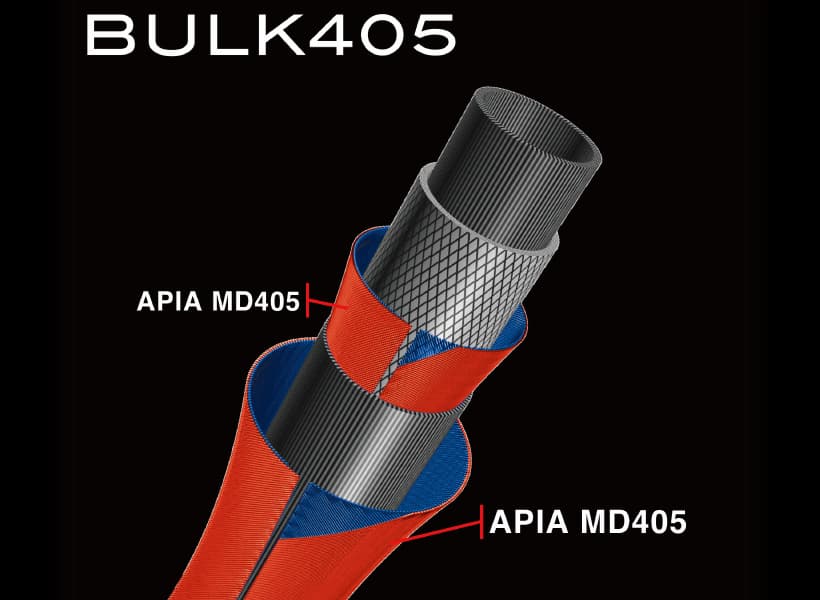
In addition, while developing rods using the T1100G, they also conducted research on joints. This is the “nano joint” created by NANOALLOY®Technology, which exceeds conventional joint performance in terms of strength, weight reduction, high balance, and bending curve.
The taper difference of joints is usually set at about 1/100mm, but for APIA, it is set at 2/1000 to 5/1000. Therefore, it is very unlikely to loosen. The high accuracy of the joints, which are subject to heavy loads, leads to strength. The WORLD OCEAN uses this nano joint in the butt joint.

In addition, a unique blank treatment is used in WORLD OCEAN. It is called “Shield Tech.
This is not just an unsanded finish, but an APIA original finish. A special tape called “Shield Tech” is wrapped around the rod to make it scratch resistant. This was used for rock shore rods, but at first we didn’t use it because we didn’t think it was necessary for offshore fishing. However, when we went on an expedition to Oman to target yellowfin tuna, the boat was driving so roughly that the blanks were covered with scratches. The lure that was hanging on the guide hit the blanks and scratched them. At such a time, we do not want the rod to be damaged by scratches on the blanks. That is why we adopted it.”
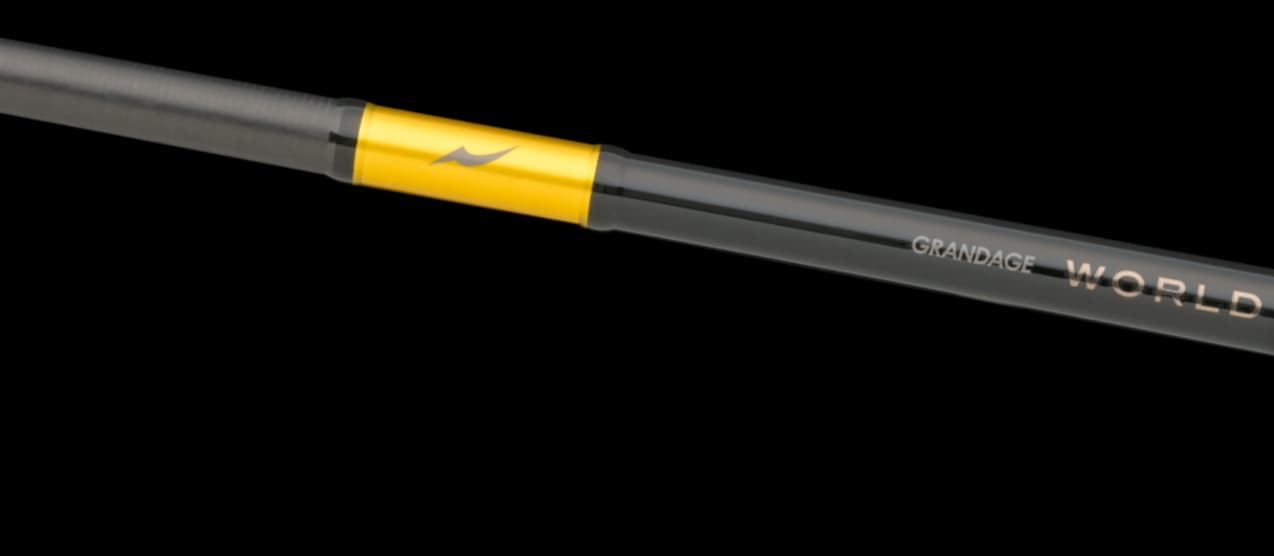
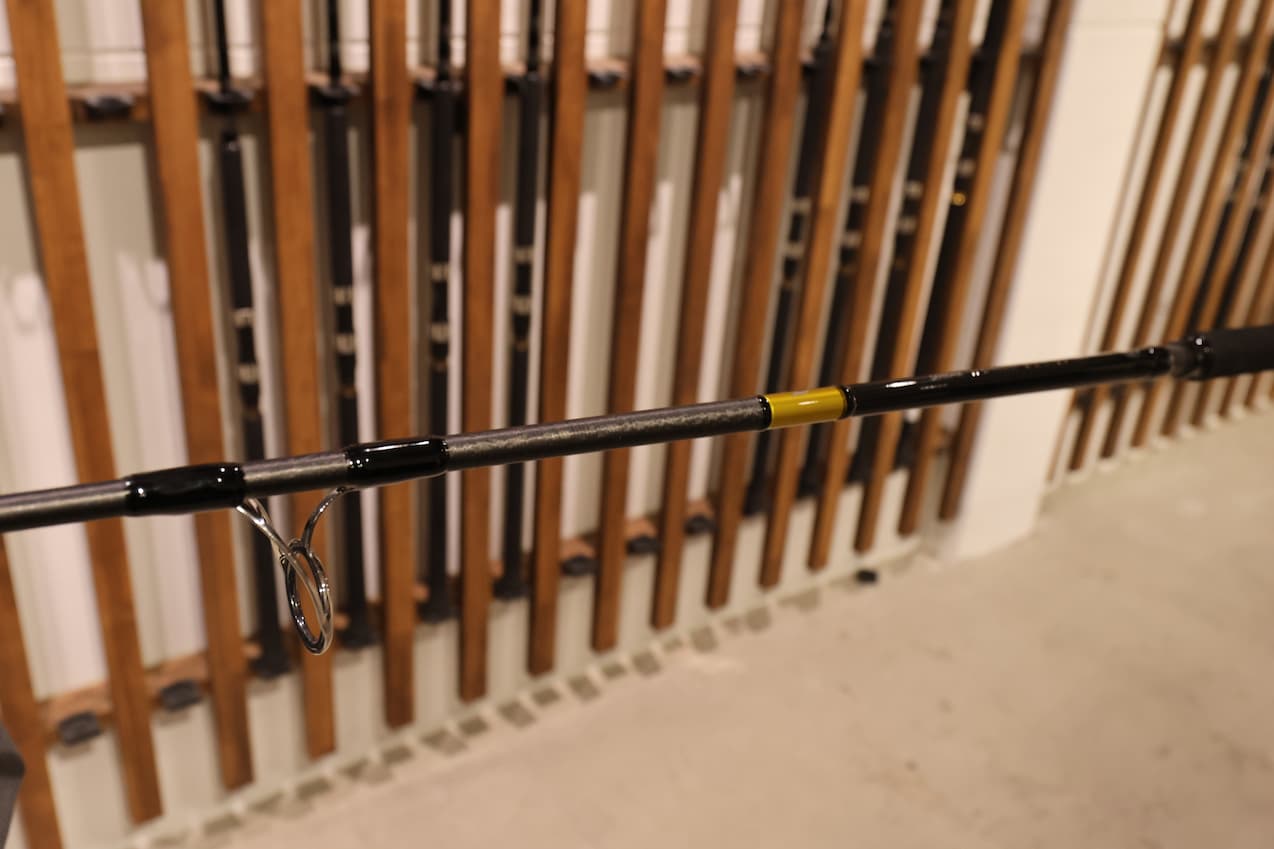
In addition to the rod manufacturing experience gained through APIA’s shore rods, the WORLD OCEAN was completed after many years of experience in rod development using the latest and strongest material, T1100G, as well as pursuing the strength aspect.
When you use it for the first time, you will be surprised at how easy it is to throw and how far it flies. It’s very different from anything you’ve ever seen before. It is a new sensation. And once you get a hit, you will realize that it can float quickly due to its strength and resilience. I believe we have reached a high standard model from the very first shot. I don’t think there are any rods that are made in the same way. We developed this product with the desire to create something special amidst the abundance of similar products. I believe it will be a rod that will stick in the minds of our customers.”
Covers everything from large skipjack to record-setting bluefin tuna
Features of each model
834ML
This model was developed for use with PE No. 4. This model was developed for targeting large bonito weighing 7 or 8 kg. We developed this model with the cooperation of the captain of a pleasure fishing boat in Mie, who targets big bonito. The length was set at 8 feet 3 inches because casting distance is necessary to catch fast-moving bonito. This length and the blank’s repulsive performance enable anglers to achieve amazing casting distance. The tip is also set to be soft. Once a bonito is hooked, it runs in all directions, making it easy to be caught. Therefore, the rod is designed to bend firmly to follow the movements of the bonefish and to use the rod’s repulsive force to keep the bonefish afloat. The soft tip and the strong resilience of the blank also make it possible to cast long distances, making it suitable for underhand casting styles such as those used in the outer areas of the fishing grounds.

825 M
This model covers a wide range of inshore casting games using PE No. 5. Targeting yellowfin and sunfish in coastal waters. In a field where many anglers attack every day and the pressure is high, it is important to attack delicately. While it has the delicacy to perform well in such fields, after a hit, it can be bent firmly and pulled in forcefully with its resilience and power. It is an easy-to-use model.”

826MH
The model with PE6 is designed for use with yellowtail sunfish, yellowfin tuna in coastal waters, and GT. It has excellent casting distance, power, and maneuverability, and can be used for a wide range of fishing from inshore waters to expeditions. It is also easy to handle even in a continuously throwing game such as GT fishing. This model is recommended for anglers who are not strong enough, elderly anglers who are losing strength, and women.

838H
This model is designed for targeting sunfish over 20 kg, GT, and tuna weighing 50-60 kg. It is also useful for targeting large yellowfin tuna off Mie and Wakayama. The rod has a tip section that makes it easy to cast, and while bending smoothly in response to the fish’s pull, the belly and butt firmly catch the fish’s power, and the rod’s resilience keeps the pressure on the fish. The fish floats quickly. It can be said that this model is the easiest to use for the average male angler.

8010HH
This model is a rod with PE No.10 specification, and while it has the strength of Double-H, its flexible and elastic blank makes it easier to handle than other rods with the same specifications. This “easy” means that there is less load on the angler’s body when casting and when the rod is bent after a hit, and it is easier to control large fish. Compared to other rods in the same class, it is not light, but many people who have it say, “It’s light! This is because the rod feels lightweight by finding the right balance. This is because we have made it so that you can feel the lightness of the rod by working out the balance. We are targeting 50kg class GTs, bluefin tuna up to 100kg, and large yellowfin tuna.

7812HHH
This model is designed for bluefin tuna over 100 kg and 200 kg class with No. 12 PE specification. This model is also designed to be strong, but with a firm rod bend so that anglers can fight even when the rod is in an upright position. Of course, it has strong power to catch the power of large fish and keep applying pressure with its resilience. The model was completed after repeated testing by testers in Hokkaido. In our testing, we had results with bluefin tuna that weighed close to 200 kg, and we asked them to provide us with feedback on the information they received while perfecting this model. If you are targeting large bluefin tuna, we recommend this model first.

7614MAX
The strongest casting model designed for use with PE No. 14. The material composition is made with a high ratio of T1100G to maximize breaking strength while maintaining casting distance and maneuverability. The rod is designed not to be just a hard rod, but to be powerful yet bendable when fighting. The length is short enough to make fighting with large fish as easy as possible, but the balance is designed to provide a good casting distance when casting. This is the model we want anglers chasing after their dream size fish to use.

768H+
This model was developed for use with sinking lures for GT fishing. It is designed to be easy to handle and lightweight by making it short-length, and to be able to compete with large GTs by distributing power and making use of its elasticity to float the fish after it hits the water. The short length makes fighting easier and gives anglers an advantage when fighting not only GTs but also tuna. People tend to think that the short length does not allow for long casting distance, but the resilience of the T1100G and the stability of the blanks after casting allow for ample casting distance.”


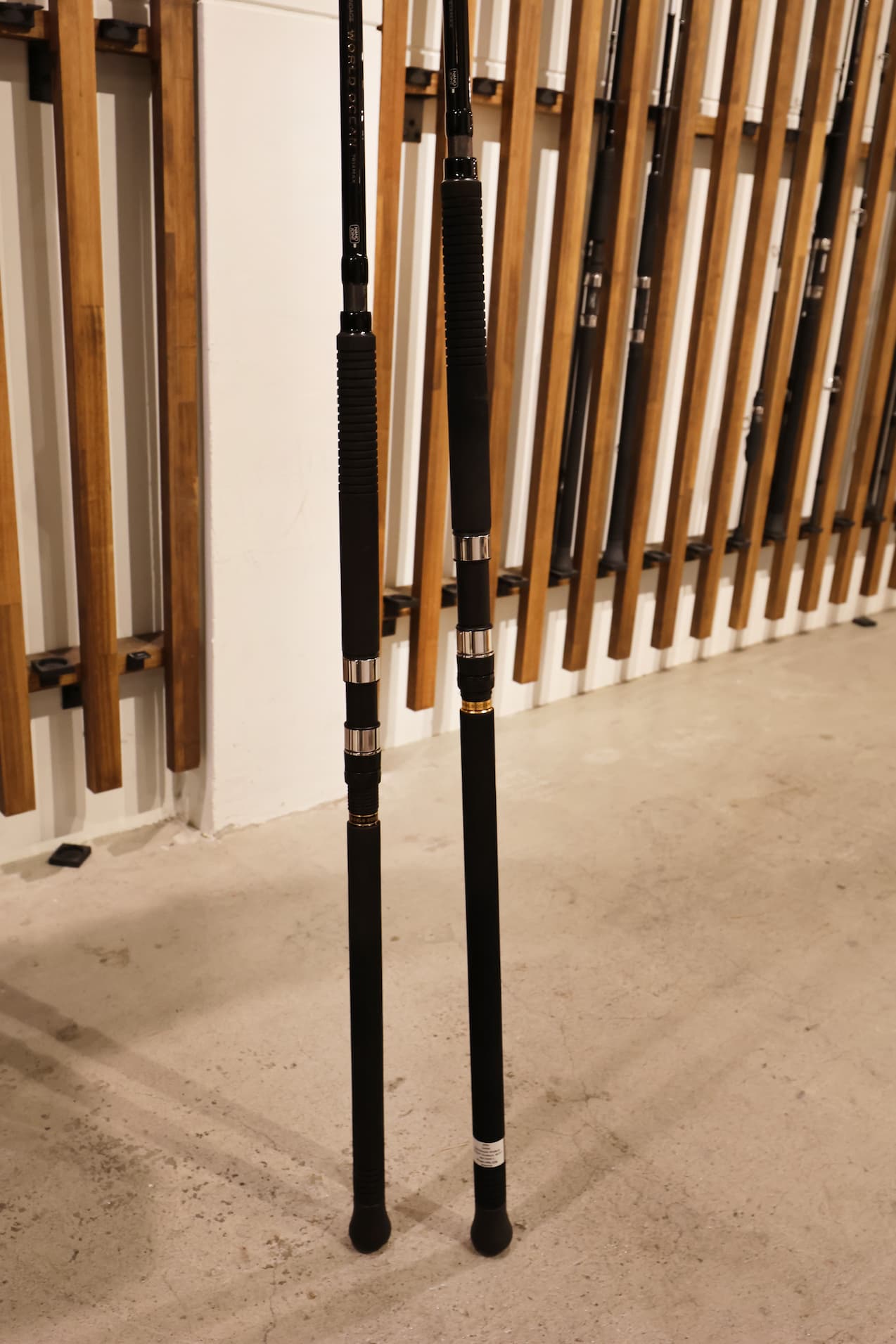
A replacement long grip is also under development. This is 10 cm longer than the normal grip to make straight fighting easier. It is designed so that the grip end does not come off the side during straight fighting.
WORLD OCEAN was launched at the end of November 2024. And from now on, in 2025, it will be available in stores around the country and will be displayed at further exhibition events. Although it is impossible to know the full extent of its performance until you actually use it, we urge you to pick it up at a store or venue and try bending it. I hope that you will try it and bend it at a shop or venue, and you will be able to see just how good this rod is.
Product information
https://www.apiajapan.com/product/rod/grandage-worldocean/
Product purchase page
https://apiaweb.shop/shopbrand/ct107/


